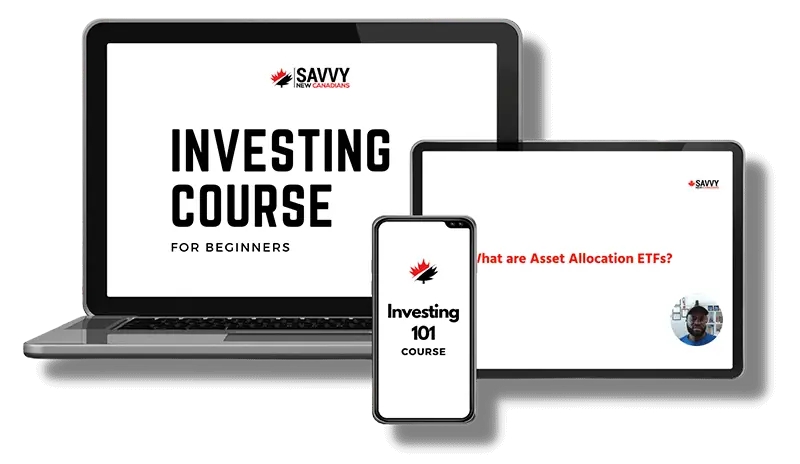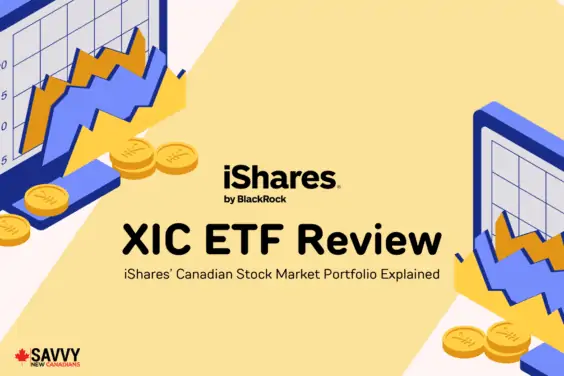Behavioural finance was one of my favourite subjects in business school, and for very good reasons.
While we would like to believe that we are rational thinkers and make the best decisions based on available information, the truth is that this is not always the case.
In fact, assessing investor actions by drawing only from traditional finance theories of rationality, CAPM models, and the efficient market hypothesis is misleading. Day-to-day reality shows otherwise – that investors are usually not close to being rational.
Read on to learn about the various investment and behavioural biases impacting your portfolio.
Behavioural Biases Impacting Your Investing
Why do investors behave the way they do?
We do not have all the answers about what drives investor actions and behaviour. However, studies in cognitive psychology, sociology, economics, and finance have provided some clues.
We owe a lot to the work done by Richard Thaler, Daniel Kahneman, Amos Tversky, Robert Shiller, and others for our understanding of behavioural finance today.
Our biases are deep-seated predispositions that often serve us well in day-to-day living, but when it comes to investing, they may become problematic. These biases may be cognitive or emotional.
The investor’s chief problem – and even his worst enemy – is likely to be himself. – Benjamin Graham
Although we cannot change the fact that we are humans (not robots) and prone to doing dumb stuff, identifying our innate biases (flaws) and understanding how they affect our decision-making is the first step in becoming better investors.
Related: Robo-Advisors in Canada.
Some of the more common biases in the behaviour of investors include:
Overconfidence
We tend to be overconfident in our decision-making abilities. Ask any driver about their car-driving skills, and they would most likely rate themselves as – better than average.
Overconfidence leads to investors overestimating their stock picking and market timing skills.
This bias may cause an investor to trade too often (racking up trading fees) and to hold an under-diversified portfolio (increasing risk).
Anchoring
Investors tend to use an “anchor” or “reference point” when making trading decisions.
For example, let us say you bought “Stock A” at $50/share. The tendency is to not want to sell the stock at any price below $50, even if fundamental and technical analyses are clearly showing that the stock is no longer worth more than $15.
You tend to stay anchored to the initial purchase price, even though new and credible information suggests this former price point has no basis in reality.
Loss Aversion
Also referred to as regret aversion bias.
We feel the pain of loss more than the joy of pain. This is why investors hold on to a stock that has been on a losing streak for months, hoping it will rebound at some point. They may even pile up on that particular stock, i.e., buy more as it continues to fall.
Loss aversion bias makes the investor hope for a break-even as they try to avoid the pain that comes with realizing a loss.
Disposition Effect
The disposition effect is related to loss aversion. An investor will sell a stock that has appreciated in price, in order to “lock” in the gains on that stock, while holding onto stocks that are losing money.
This bias runs contrary to the timeless investing rule:
Cut your losses short and let your winners run.
Representativeness
We attribute significance to characteristics or events arbitrarily. For instance, because a stock performed well in the past, we assume it will continue to prosper in the future, and vice-versa.
Fund managers who have had good records in the past are expected to continue the trend in the future, even if their good performance was over a relatively short period.
Essentially, we think past performance is an indication of future performance.
Related: Ultimate Guide to Retirement Income in Canada.
Recency
Recent events shape our worldview more than we’d like to admit. Following the financial crises of 2008/2009, the instinct of many investors was to exit the market, even when, realistically, that era was great for loading up on great stocks at bottom prices.
This is because we tend to predict the future based on recent events/information and using a limited time frame – aka bounded rationality.
Be fearful when others are greedy and greedy when others are fearful. – Warren Buffett
Familiarity
This is the reason investors tend to consider ‘local’ assets as being safer, and then go ahead to construct portfolios that are overweight with assets from local markets that they are more familiar with, hence foregoing adequate diversification.
Because we don’t know enough about an asset, we feel it must be riskier.
Financial advisors also fall prey to this bias. They may recommend investments they are more familiar with (domestic assets), exposing their clients to higher risk and a sub-optimal portfolio.

Confirmation
We naturally don’t like opinions that differ from the ones we hold. An investor with ‘prior’ information is looking for additional information that supports or validates their initial belief.
When we think a stock is a good investment, any supporting information we find is considered factual. This is similar to the anchoring bias.
Framing
I like to think that when I look at my finances in general, I’m thinking comprehensively, i.e. looking at the big picture. However, that is not usually the case.
Instinctively, we create ‘frames’ that segregate our portfolios and treat them differently, be it for risk tolerance, expected returns, and so on.
We become fixated on specific stocks or investments that are gaining or losing and how they interact with the entire portfolio.
Mental Accounting
Due to mental accounting, we treat money from different sources differently, even when the same rules should apply.
For example:
- Why do people spend more when they are paying with a credit card vs. cash?
- Why does a dollar earned from working appear to have more value than a dollar found on the trail?
- Why do people find it easier to burn through their tax refund and see it as “free” money while they are more conservative with their bi-weekly pay or the funds in their retirement pot?
Herd Mentality
We prefer to listen to the wisdom of the crowd – everyone is buying, so it must be the right time to buy and vice versa.
While there may be safety in numbers (sometimes), following the crowd will often lead you to jump off the cliff in the financial markets.
The recent boom and busts in the cryptocurrency world are an example of this. And, of course, we cannot ignore the lessons of the Tulip mania and other asset bubbles, crashes, and burns of the last few centuries.
Self-Attribution
When we ‘win’ with our investment portfolio, we are happy to take the credit. However, when we are on a losing streak, the market or others are to blame.
Investors find it difficult to differentiate between outcomes that are due to skill and luck.
Nobody accepts randomness in their successes, only their failures. – Nassim Taleb
Related: How Much Income Will You Need in Retirement?
How To Manage Behavioural Biases For Investing Success
As humans with a brain box that houses billions of neurons that are all interconnected and transmitting signals endlessly in a pool of chemicals, the likelihood of getting rid of all our biases is slim to none.
However, understanding and acknowledging our biases is a key first step in making smarter investing decisions. When we recognize our “weaknesses”, we can apply specific strategies to avoid making costly mistakes.
Some strategies for mitigating the negative impact of biases on your investments are:
1. Become a Passive Investor
You can create your own diversified portfolio using a mix of stocks. However, when you consider that you will have to battle several biases with this strategy, going with an index fund (or ETFs) may make your diversification goal easier to achieve.
It takes a lot of discipline to monitor a small basket of individual stocks and remain adequately diversified at the same time.
Hold onto one (or a few) diversified index funds/ETFs and allocate these assets to fit with your risk tolerance and investing horizon. Plan to hold your assets for the long term.
When analyzing your investments, consider them all as one efficient portfolio.
Your overall portfolio return is all that matters. – William Bernstein
2. Automate Your Investing
Stop trying to time the market and put your investing contributions on autopilot.
Regular automated contributions to your investment account result in dollar-cost averaging. Unintentionally, you buy more units of an asset when its price is low, and less when its price is high.
3. Re-balance on a schedule
Depending on the assets populating your investment portfolio, you may need to rebalance every now and then to reflect your risk tolerance.
Plan to rebalance your portfolio at least once a year (or at the most twice/year). Overly frequent rebalancing will expose you to increased trading fees and bad behaviour.
4. Trade Less often
Check your stock/fund/ETF positions less often, and invest for the long term.
Too frequent trading will expose you to short-termism, trend-chasing, anchoring, market timing, and many other biases. There is a tendency to take on more risk, and rack up trading fees that either compound your losses or significantly dent gains.
When you trade less, it is easier to keep your emotions in check.
5. Avoid Financial News
Journalists in the financial industry always have an answer for what the markets are doing.
How many times have you heard phrases like: “Dow jumps 200 points on XYZ expectations,” and on the same day, or the one following, “S&P drops 78 points on XYZ fears.”
While their assertions sometimes have an element of truth (infrequently), they should not really concern you (for the most part) if you are doing your investing right.
Financial market news is often littered with conjecture and hype – ignore it whenever you can.
Bullish or bearish are terms used by people who do not engage in practicing uncertainty, like the television commentators, or those who have no experience in handling risk. – Nassim Taleb
6. Seek Differing Opinions
In investing and in life, differing opinions matter.
Before making decisions on your investments, thoroughly research supporting and contradictory information. Don’t just look for “confirmation.”
See if you can find real, cold, hard facts to support or invalidate your plan. Consider befriending a contrarian. 😉
7. Seek Professional Advice
There’s a place for professional advice if DIY is not your thing or is not working for you. While you want to avoid paying excessive fees for investment advice, a fee-only financial advisor can be helpful in combating your biases.
Having someone go through the decision-making process – investment objectives, risk tolerance, investing time horizon, asset allocation, risk vs. return, and investing strategies, can be useful. That said, financial advisors can and do have their own biases which they have to watch out for.
Another way to prevent biases from yourself and/or your financial advisor from derailing your investing success is to use Robo-Advisors.
Robo-advisors make professionally managed portfolios available to you at a fraction of the cost. There is less human involvement (mostly algorithms), and rebalancing and diversification are implemented automatically.
Justwealth

Top-rated online wealth manager
Several customized portfolios & low fees
Unique RESP and other offerings
Auto rebalancing and div reinvesting
Earn up to a $500 bonus







Great job on this article! I’m intrigued by your thoughts.
@Steve: I do listen to the news as well…mainly out of habit, but since my investment portfolios are automated, it doesn’t really matter how I feel – I just try to stick with the plan through thick and thin.